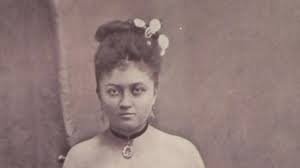In the annals of medical history, few individuals have captured the imagination quite like Blanche Dumas. Known for her unique anatomical condition, her story has been a topic of intrigue and study for medical professionals and historians alike. But who was Blanche Dumas, and why does her life continue to resonate with so many? In this article, we will explore her remarkable story, examining not just her life but also the broader implications of her condition in the context of society and medicine.
Who Was Blanche Dumas?
Blanche Dumas was born in the 19th century with a rare congenital condition known as caudal duplication. This medical anomaly resulted in her having additional limbs and reproductive organs. Her unique condition made her a subject of interest in medical circles, contributing significantly to the study of human anatomy and congenital disorders.
The Legacy of Blanche Dumas
Beyond her physical attributes, Blanche Dumas’ life is a testament to resilience and human curiosity. Her existence challenged the 19th-century medical community to expand their understanding of human biology and congenital conditions.
Exploring the Intrigue
Medical Significance
The condition that Blanche Dumas had, known as caudal duplication, is extremely rare. It provided a unique opportunity for the medical community to study and document cases of congenital anomalies. This study has paved the way for advancements in understanding genetic mutations and developmental biology.
Social Impact
The story of Blanche Dumas also highlights societal attitudes towards individuals with exceptional physical conditions. During her lifetime, there was a significant interest, sometimes bordering on exploitation, in her condition. This reflects the broader societal fascination with the “unusual” and raises questions about ethics in medical research and display.
Table of Insights
| Aspect | Details |
| Medical Condition | Caudal duplication – rare condition with additional limbs and organs |
| Historical Context | 19th-century medical and societal interest in congenital anomalies |
| Impact on Medicine | Contributed to the study of human anatomy and genetics |
| Societal Implications | Raised ethical questions about the display and study of individuals with unique conditions |
Read more: The Pizza Edition: The Ultimate Guide to Delicious Pizza
FAQ Section
Caudal duplication is a rare congenital condition characterized by the duplication of body parts, which can include limbs and organs.
Her condition offered a rare opportunity for medical professionals to study the complexities of human anatomy and congenital disorders, advancing scientific knowledge in these areas.
Ethical considerations include the rights of individuals with unique conditions, consent, and the potential for exploitation in the name of scientific curiosity.
Blanche Dumas is remembered both for her unique condition and for her contribution to medical history, serving as a case study in medical textbooks and discussions about ethics in medical research.
While rare, modern medicine continues to encounter congenital conditions similar to caudal duplication, each contributing to the ongoing study of genetics and embryonic development.
1
Caudal duplication is a rare congenital condition characterized by the duplication of body parts, which can include limbs and organs.
2
Her condition offered a rare opportunity for medical professionals to study the complexities of human anatomy and congenital disorders, advancing scientific knowledge in these areas.
3
Ethical considerations include the rights of individuals with unique conditions, consent, and the potential for exploitation in the name of scientific curiosity.
4
5
While rare, modern medicine continues to encounter congenital conditions similar to caudal duplication, each contributing to the ongoing study of genetics and embryonic development.
Conclusion
Blanche Dumas’ life and condition continue to fascinate both medical professionals and the public. Her story not only highlights the complexities of human biology but also serves as a reminder of the ethical considerations that must be navigated in medical research and societal interaction. By understanding the nuances of her life and condition, we gain valuable insights into the evolution of medical science and societal attitudes toward difference. Blanche Dumas remains an enduring figure in both scientific and cultural history, exemplifying the intersection of biology, society, and ethics.








